He experienced the fierce days in Quang Tri, and was present in the 203rd Tank Brigade that entered the Independence Palace on April 30, 1975, contributing to the resounding victory of the historic Ho Chi Minh Campaign.

Priceless battlefield sketches
In the artist Le Tri Dung's studio, in the most solemn position are wartime memorabilia arranged in an impressive manner: a bullet-riddled helmet, a water bottle, an iron mug, a hammock, a leather belt, a canvas pole, a brick brought back from Quang Tri Citadel... All are living evidence, preserved by him as part of his memories as a soldier, marking the places he fought or passed through.
Artist Le Tri Dung said that when he first joined the army, he was an infantryman of the 338th Division of the Capital Military Region, a unit tasked with reinforcing the southern front. When the unit reached the north bank of the Thach Han River, the Quang Tri campaign began. The fighting was fierce, and our army could not avoid losses. In that situation, superiors ordered soldiers who were university lecturers, final year students... to retreat to supplement technical branches such as Air Defense - Air Force, Tank - Armored... At that time, Le Tri Dung was transferred to the 10th Tank - Armored Battalion to learn to drive tanks.
.jpg)

By chance, his superiors learned that Le Tri Dung was a senior student at the University of Fine Arts, so he was transferred to be a propaganda officer of the Armored Corps. From there, he worked as a war correspondent, taught art to soldiers, and was in charge of opening a screen printing workshop to produce propaganda posters.
In September 1972, Le Tri Dung was assigned to draw a large poster (5m x 3m) to celebrate the 13th anniversary of the Corps' founding, with the requirement to show the attacking spirit and the spirit of joint combat. He immediately depicted the image of 3 soldiers, 1 commander, 1 driver, 1 gunner forming the main group, behind which were tanks advancing under the liberation flag... This first panel made a strong impression on his superiors and comrades.
Soon after, Le Tri Dung was assigned to print 2,000 propaganda posters using screen printing techniques, praising the rapid attack power of tank troops. Many of these works were rolled up, sent to combat units, and pasted on gun turrets, contributing to encouraging the troops' spirit to defeat the enemy.
After the screen printing session, Le Tri Dung received a brief but trustworthy instruction from his superior: “Follow the convoy to Quang Tri, and when you arrive, split off and go independently. Bring your camera and a few rolls of film, go to the battlefield to take photos, and open a drawing class for the soldiers. Remember to sketch a lot, the soldiers really need art!”

Since then, artist Le Tri Dung has traveled across the battlefields, taking hundreds of photos and drawing hundreds of sketches on all kinds of materials: Newspaper, packaging, notebooks, the backs of documents... His themes range from moments of preparing for battle, clearing the battlefield, the bond between the army and the people, combat meetings, to scenes of bandaging wounded soldiers after a battle.
While fighting and painting, artist Le Tri Dung depicted the places he had been to and the people he had met - from brave gunners, engineer soldiers, female liaison officers, to privates and first-class soldiers who had just joined the army. Each sketch to him was not only a work of art but also a memory, sometimes a sharp pain - because there were paintings that had just been finished, and a few days later, when he returned, he learned that the comrade in the painting had died.

Sitting and flipping through each old sketch, he slowly introduced it, his eyes filled with nostalgia: “This is a painting of a soldier raising pigs on a post, showing an optimistic spirit in the midst of hardship. The pigsty is made from a wooden ammunition box of the enemy, the pig trough is made from a bomb that was sawn in half lengthwise. And this is a painting of a soldier cleaning an anti-aircraft gun, with a bunch of cacti nearby, the soldier has to crawl under the gun to clean the gun. This painting captures the scene of the forest being destroyed by enemy bombs, but our tanks still bravely advance through, showing the indomitability and resilience of our troops.”

Although he sketched a lot, the artist still had a burning desire to paint a great work that clearly expressed the heroic spirit of the Tank - Armored Corps. One day, while marching through a place that had just experienced a fierce bombing, he suddenly shivered when he saw the image of a tank suddenly pouncing around a bend under the red sunset. The tank was like a fierce tiger, its camouflage fluttering, its tracks tearing up the road, its gun barrel turning proudly along the jagged cliff. He quickly sketched this image next to the smoke of bombs and half-burned forest trees, along with the image of female volunteers with scarves around their necks next to ancient trees as if they wanted to fly away from the edge...
“That moment marked the moment when I painted the famous lacquer painting “Overcoming the Key Point”, which is currently on display at the Vietnam Fine Arts Museum,” confided artist Le Tri Dung.

Proud of a time of fire and flowers
In April 1975, Le Tri Dung received orders from the Tank - Armored Corps to participate in the Ho Chi Minh Campaign. When he arrived in Saigon on the afternoon of April 30, 1975, the city had been completely liberated. The sketch "The April Escape" drawn by Le Tri Dung at that historic moment has become a priceless memory.
During his stay in Saigon, the artist was assigned a special task: to paint and take documentary photos of the scene at the Independence Palace - where the tanks of the Armored Corps entered, ending the historic Ho Chi Minh Campaign. For him, this task had a particularly profound meaning, because Company 4, Tank Brigade 203 - his unit - was the first force to capture the Independence Palace, contributing to putting an end to the nation's long and arduous war.
After laying down his arms and returning to civilian life, Le Tri Dung became a famous painter of modern Vietnamese fine arts. The two subjects that he was deeply attached to were war and horses - also the two major areas of his work that he devoted his entire life to pursuing.

The sketches of the battlefields drawn amidst bombs and bullets have become famous paintings known to many people. In addition to the work “Overcoming the Key Point” (lacquer, 1974), the works “Crossing the River” (lacquer, 1976), “Dioxin Forest” (silk, 1989), “Mother of the Soldiers” (oil, 1999), “Border” (a work that won the National Fine Arts Exhibition Award in 2000), “Portrait of a Soldier” (oil, 2004), “Post-War” (2005, currently kept at the Vietnam Fine Arts Museum), “Behind the Battle” (C Prize of the National Fine Arts Exhibition in 2009)... all reflect the brutality of war and the bravery of soldiers. He also participated in many large international exhibitions on the subject of war such as the exhibition "A View from Both Sides" (Boston, USA), the exhibition "Southern State" (Sydney, Australia). In 1992, he was invited by the American Veterans Association to the United States to participate in an exhibition and made a deep impression with a series of works on the subject of Agent Orange.
Later, in addition to the themes of war and horses, painter Le Tri Dung was also famous for his paintings of zodiac animals, lotus flowers, and characters from “The Tale of Kieu”. And no matter what the subject, Le Tri Dung always painted with pride, passion, and determination of a soldier who had experienced war.
50 years after the reunification of the country, recalling each battle, he could not help but be moved when thinking about the sacrifices of his comrades right before the moment of peace. He felt satisfied because he had lived and fought in a glorious time, then returned to continue his career. "I will always be a soldier holding a brush!" - painter Le Tri Dung shared, his eyes sparkling with pride.
Source: https://hanoimoi.vn/hoa-si-le-tri-dung-toi-mai-la-nguoi-linh-cam-co-700919.html





![[Photo] Feast your eyes on images of parades and marching groups seen from above](https://vphoto.vietnam.vn/thumb/1200x675/vietnam/resource/IMAGE/2025/4/30/3525302266124e69819126aa93c41092)
![[Photo] Fireworks light up the sky of Ho Chi Minh City 50 years after Liberation Day](https://vphoto.vietnam.vn/thumb/1200x675/vietnam/resource/IMAGE/2025/4/30/8efd6e5cb4e147b4897305b65eb00c6f)


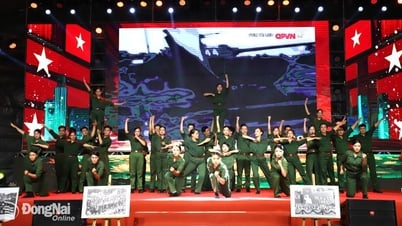


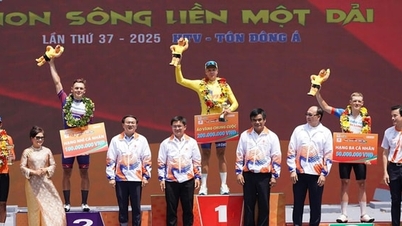








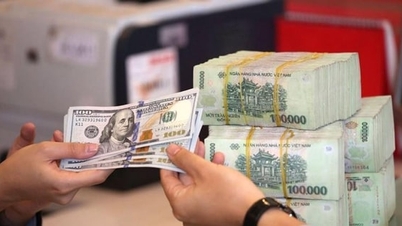



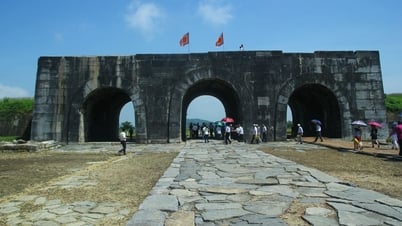



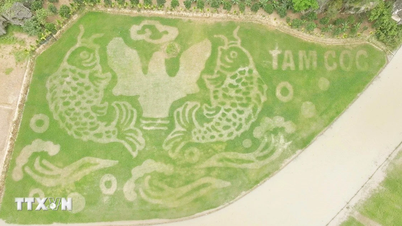











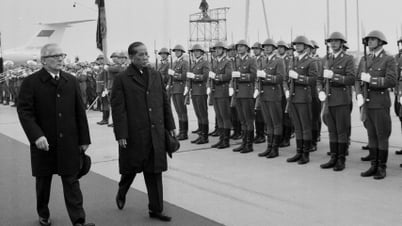

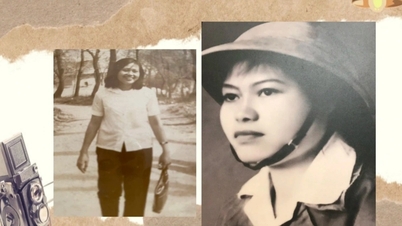















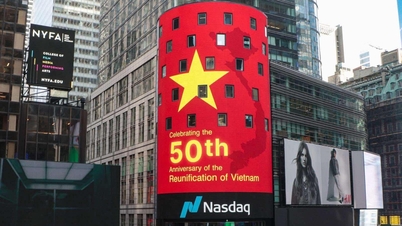

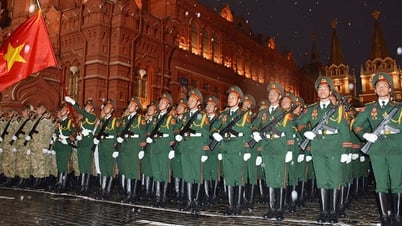













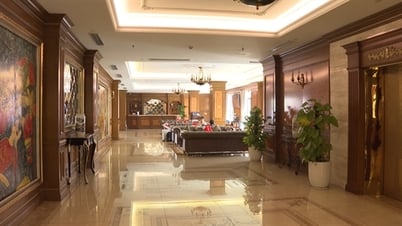













Comment (0)